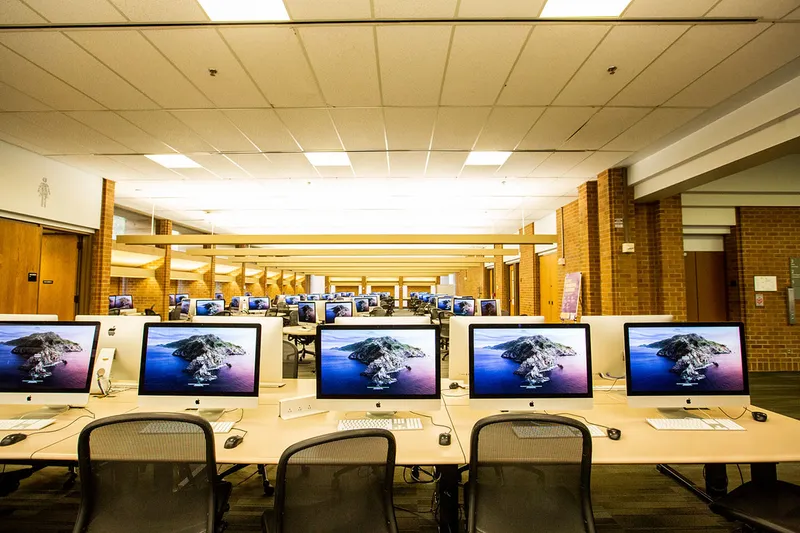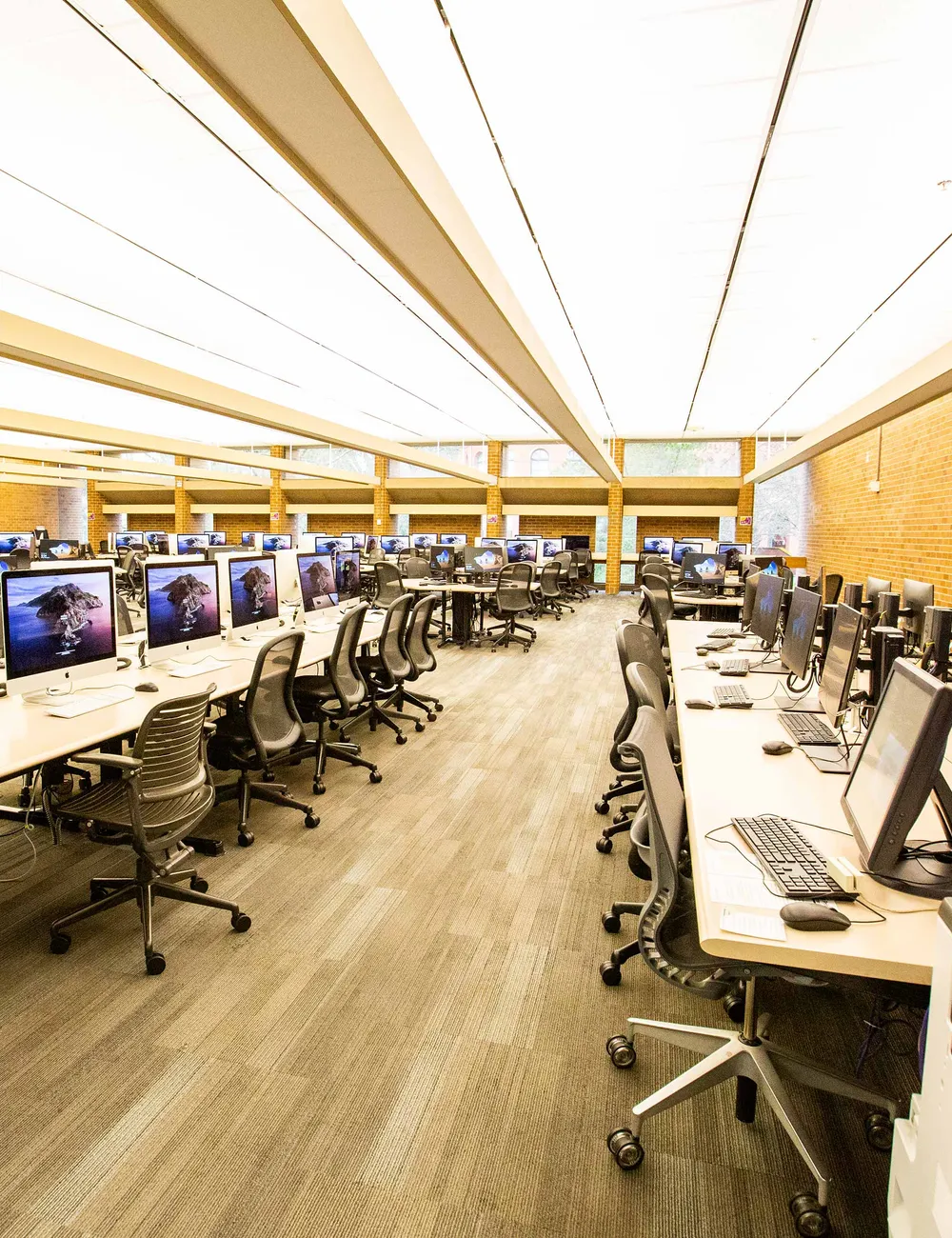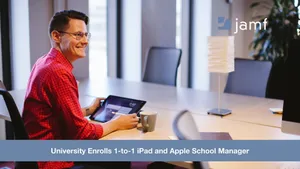The University of Washington's Learning Services' Academic Technologies department went from quarterly computer lab updates of four weeks to only four days, done as needed rather than quarterly,.
If you walked into the University of Washington's Odegaard Library and saw the rows and rows of beautiful Mac computers, you might imagine that it takes an entire department to maintain such a place.
It doesn't. But it used to.
The Odegaard Learning Commons, the University of Washington's central computer lab, it is open seven days a week and operates on a 24-hour model during important times of each term, such as midterms and finals.
Their Jamf instance is also used to power the Student Technology Loan Program, which is a device checkout program for students. Both services are funded entirely by the Student Technology Fund managed by a committee of students. These two services are student-funded, accessible services dedicated specifically to the student population for use with their academic and social experiences.
The Learning Services' Academic Technologies department, a part of the Academic and Student Affairs Department housed in Odegaard Library, is responsible for:
- A computer lab, 10% of which are Windows machines and 90% Apple
- 100 Macs in two computer classrooms
- Call center Mac workstations
- Laptop carts used for training
- The Odegaard Sound Studio
- Consult with and assist with the administration of the student tech loan program, housed in a neighboring building
Until Academic Technologies began mobile device management with Jamf Pro, the systems team had to individually re-image and update each and every one of the 800 computers in the lab, classroom, studio and carts quarterly.
Quarterly Mac updates
Updating computers quarterly is less than ideal for all sorts of reasons.
First, OS and app updates come far more frequently than quarterly, which means that by definition within a few weeks the newly deployed Mac devices would be out-of-date.
Second, patches and other fixes had to wait for the next deployment. This meant that every time a computer would have OS trouble, the staff would have to put up an 'out of order' sign and remove the computer from availability, waiting until the next re-imaging process.
Third, because the re-imaging process was so time-intensive and needed so many hands, they could only happen when school was on break. Even then, most breaks did not last long enough. This would force their team to shut down large numbers of the library's computers from student use. This was a big problem; many of the University of Washington's students depended exclusively on the University for their computer access.
Mac deployments became increasingly time-consuming
On top of the less-than-ideal quarterly schedule, says Ashlar Trystan, Systems Administrator at Academic Technologies, "The process was extremely time- and bandwidth-intensive."
For 10 years or so prior to enlisting Jamf's help, Academic Technologies sed DeployStudio to push these deployments. At first, they imaged about 50 Macs simultaneously in four hours. But for whatever reason, the longer they used it, that performance decreased over time.
At the very end of their time with DeployStudio, Trystan's team were not able to image more than 10 computers simultaneously over that same 4 hours – even after adding the stopgap system restore software Deep Freeze into the mix.
The team was unable to focus on other projects
Not only did the deployments themselves take a long time, but so did prepping for them, performing troubleshooting and implementing the deployments. It came to be that the entire systems team was focused on nothing but deployments, unable to take a moment to come up with new projects or better ways to serve their students.
There had to be a better way, said Ashlar Trystan.
They wanted to get away from monolithic deployment and switch to a modular deployment system to do things remotely and more efficiently.
The results: nothing short of astounding
Now? Updates that used to take up to a month now take four days.
Ashlar Trystan and their team can now update 150 devices simultaneously. "This is the most I have tried at one time," says Trystan, "but believe it could do far more. I am going to have one great re-do of the lab before we restore operations, post-pandemic, and am convinced that it will handle the entire thing simultaneously."
As of today, they have just shy of 1,000 devices, all on Jamf.
Now, Trystan and their team have so much more time to devote to bigger, better things with the lab and the student technology group. They're managing multiple platforms, a growing fleet of Mac devices, and they have time to think ahead, plan and treat internships as a real education.
Trystan's students are now learning a highly sought-after skill they will have under their belts after graduation: how to be an Apple admin.
In addition, students using the computer lab have a far more seamless and private experience. Students log in with their university IDs. When they're done, they log out and that session is cleared for the next student, leaving behind no personal data.
An impact on the entire university
Leading the charge on what's possible with Jamf and Apple have made Trystan and their team tech innovators: other departments have followed their lead. From the Department of Surgery to the School of Arts, the Business School and even a group called the iSchool, departments are succeeding with Apple in new and innovative ways.
See what Apple and Jamf can do for your university with a free trial.






